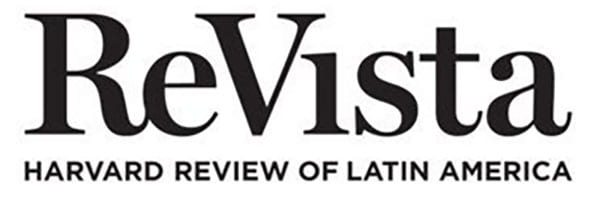Photoessay by Connie Frances Calderón
I submitted these three images to the contest because I believe they capture the essence of contemporary Peru: a country deeply marked by its social, political and political contrasts.
The first photograph reveals an intimate contrast within what represents everyday life: a family scene, full of dignity and resilience, taking place under the shadow of a military tank. tank. This photograph seeks to highlight how the daily life of many Peruvians continues in the midst of militarization and fear, because of the need to subsist.
The second and third images reveal the tension that exists between the state apparatus and the citizenry, especially in contexts of protest. In the second, a demonstrator confronts the policeman in a symbolic act of cultural resistance and institutional repression, showing how the country’s geographic and ethnic differences are also manifested in the streets.
In the third, the National Holidays parade, a symbol of national pride, is interrupted by the demand for justice by citizens who still mourn their dead. Through these three scenes, I propose a critical but empathetic look at Peru today, where contrasts not only coexist, but are deeply intertwined in the social fabric.

In the context of the protests against the government of Dina Boluarte, a father and his two daughters play their instruments to interpret songs that will allow them to earn a little money to survive. Central Market, Lima, Peru, December 8, 2023

A police officer confronts a demonstrator with a truncheon while she tried to defend herself with a whip that is typical of her part of the country. This scene took place in the middle of the so-called “The Second Takeover of Lima,” in which the Peruvian government deployed a large police contingent that repressed the demonstrators in a disproportionate way, causing a great number of death and injured.

In the context of the traditional parade for the national holidays, police confront demonstrators reclaiming the rights of the victims of the protests. A woman crosses in the middle of a quarrel, covering her face to protect herself against tear gas. Plaza Dos de Mayo, Lima, July 29, 2023
Connie France Calderón is one of the winners of the Ojos Propios contest.
Instagram:@conniefrance
Web: www.behance.net/conniefrance
LinkedIn: www.linkedin.com/in/conniefrancecm
Fotoensayo por Connie Frances Calderón
Presenté estas tres imágenes al concurso porque considero que capturan la esencia del Perú contemporáneo: un país profundamente marcado por sus contrastes sociales, políticos y culturales.
La primera fotografía revela un contraste íntimo dentro de lo que representa el día a día: una escena familiar, llena de dignidad y resiliencia, que ocurre bajo la sombra de un tanque militar. Esta fotografía busca poner en evidencia cómo la vida cotidiana de muchos peruanos continúa en medio de la militarización y el miedo, por la necesidad de subsistir.
La segunda y tercera imagen revelan la tensión que existe entre el aparato estatal y la ciudadanía, especialmente en contextos de protesta. En la segunda, una manifestante y un policía se enfrentan en un acto simbólico de resistencia cultural y represión institucional, mostrando cómo las diferencias geográficas y étnicas del país también se manifiestan en las calles.
En la tercera, el desfile por Fiestas Patrias, símbolo del orgullo nacional, se ve interrumpido por la demanda de justicia de ciudadanos que aún lloran a sus muertos. A través de estas tres escenas, propongo una mirada crítica pero empática del Perú actual, donde los contrastes no solo coexisten, sino que se entrelazan profundamente en el tejido social.

En el contexto de las protestas en contra del actual gobierno de la presidenta Dina Boluarte, un padre y sus dos hijas tocan sus instrumentos para interpretar canciones que les permiten ganar un poco de dinero con el que sobreviven día a día. Al fondo, se ubica un tanque desplegado por las fuerzas del orden alrededor del Centro de Lima para hacer frente a los manifestantes. Mercado Central, Lima, Perú 8 de diciembre de 2023

En el contexto del tradicional desfile por Fiestas Patrias, policías se enfrentan a manifestantes que reclaman por las víctimas de las protestas en contra del gobierno. Una señora cruza en medio de la trifulca cubriéndose el rostro para intentar protegerse de los gases lacrimógenos. Plaza Dos de Mayo, Lima, Perú 29 de julio de 2023

Un policía se enfrenta a una manifestante con una vara mientras que ella se defiende del mismo con un látigo propio de su región. Esta escena se lleva a cabo en medio de la denominada “Segunda Toma de Lima”, en la que el Estado peruano desplegó un gran número de contingente policial que reprimió de manera desproporcionada a los manifestantes, causando un gran número de heridos y fallecidos. Centro de Lima, Lima, Perú 24 de enero de 2023
Connie France Calderón es uno de los ganadores del concurso de Ojos Propios.
Instagram:@conniefrance
Web: www.behance.net/conniefrance
LinkedIn: www.linkedin.com/in/conniefrancecm
Related Articles
Editor’s Letter: Inequality
In celebration of the 30th anniversary of the David Rockefeller Center for Latin American Studies at Harvard (DRCLAS), ReVista is focusing on inequality.
The History of Inequality
For the last few decades, a strong consensus has held that Latin America is not only the most economically unequal region in the world, but also one where inequality has become structurally entrenched. Even in countries where income levels are relatively high by global standards, a small elite continues to control a disproportionate share of national wealth. This consensus reflects a broader shift in the development community and public arenas.
Waxing and Waning: Institutional Rhythms of Inequality
Zelia Maria Magdalena Nuttall was famous in her time, well-known as an archaeologist, an Americanist, an antiquarian, an ethnologist, a folklorist and “a lady scientist”; she was a woman “making it” in a man’s world from the 1880s to the 1930s. Deeply engaged in research about ancient civilizations in Mexico, she led a remarkable life as a pioneer in the evolution of anthropology as a field of study.



